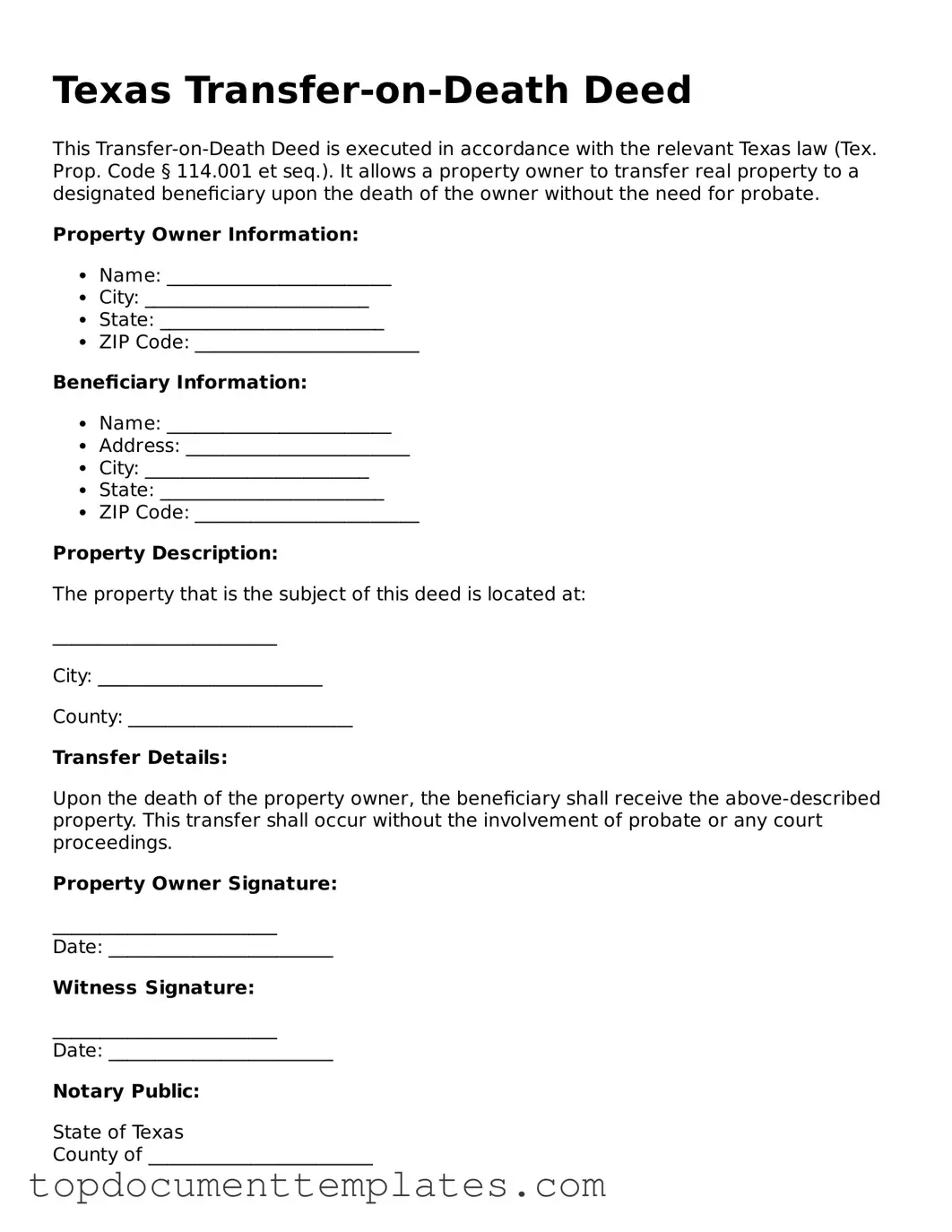Valid Transfer-on-Death Deed Form for Texas State
A Texas Transfer-on-Death Deed form allows property owners to designate beneficiaries who will receive their real estate upon their death, bypassing the probate process. This legal tool provides a straightforward way to transfer property, ensuring that loved ones inherit without unnecessary delays. Understanding how to effectively utilize this form is essential for anyone looking to simplify their estate planning.
To get started with your Transfer-on-Death Deed, fill out the form by clicking the button below.
Open This Form
